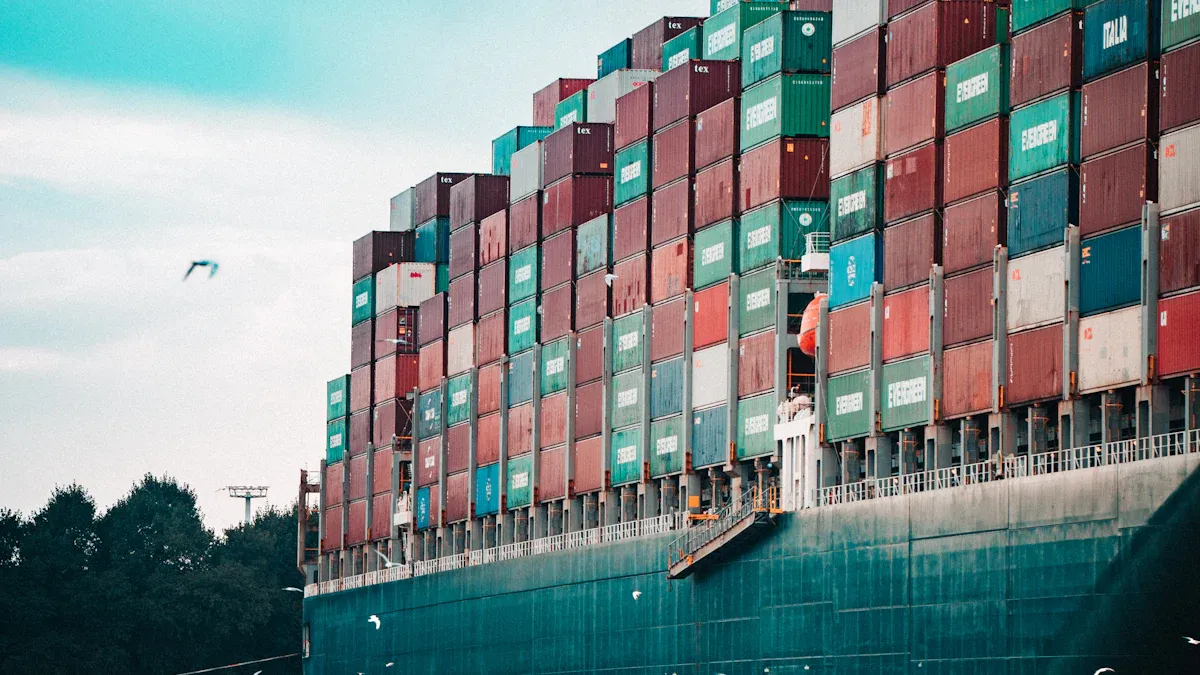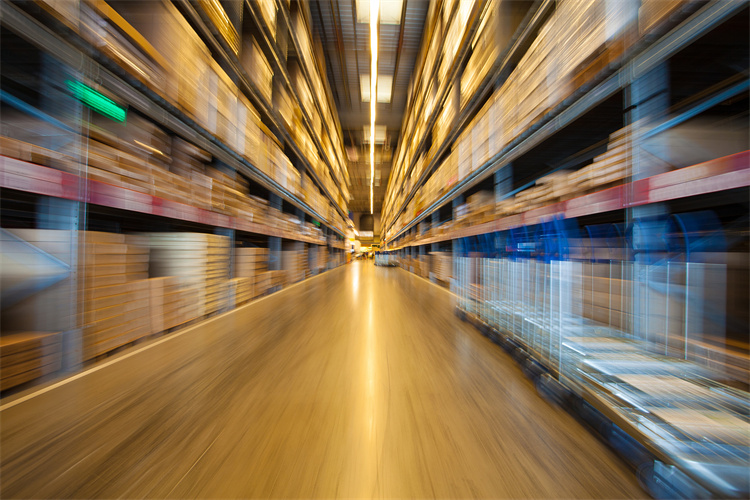Latest Trends in Logistics and Shipping Enterprises Driving Efficiency

Success in logistics depends on working efficiently and using new ideas. Companies using AI save 15% on costs and improve inventory by 35%. In shipping, tools like blockchain and robots are changing how things work. About 80% of companies want to use automation to stay competitive.
Key Takeaways
AI tools help companies save 15% on costs. They also improve inventory tracking by 35%. Use AI to make logistics work better.
IoT devices track shipments in real-time. This helps you see where items are and avoid delays. Use IoT to make shipping faster and easier.
Green practices, like using electric trucks, help the planet. They also make work more efficient. Go eco-friendly to please customers and follow rules.
Technology-Driven Logistics Industry Trends

Artificial Intelligence (AI) for Predictive Supply Chain Management
AI has changed how supply chains work by predicting needs. UPS saves $400 million yearly by using AI to cut fuel and labor costs. AI helps businesses guess inventory needs and avoid waste. Smart systems study past data to predict future trends. This helps companies use resources better and avoid problems. AI tools also plan delivery routes based on traffic. These tools show how AI is improving logistics technology.
Internet of Things (IoT) for Real-Time Shipping Visibility
IoT tools help track shipments in real time. GPS shows shipment routes, arrival times, and delays. Sensors check temperature and humidity to keep goods safe. Data tools study information to make shipping smoother. These tools save money and improve order tracking. IoT is now a key part of digital logistics.
Metric/Insight | Description |
|---|---|
GPS Tracking | Tracks shipment routes and delays in real time. |
Sensor Technologies | Checks temperature and humidity during shipping. |
Data Analytics | Studies data to save costs and improve shipping. |
Blockchain for Transparent and Secure Supply Chains
Blockchain makes supply chains safer and clearer. It keeps records that can’t be changed. Smart contracts handle rules automatically, saving time and effort. Walmart uses blockchain to track food safety and reduce waste. It also helps track carbon footprints for eco-friendly goals. Blockchain is growing fast, showing its big role in logistics.
Big Data Analytics for Enhanced Decision-Making
Big data helps companies make better choices in supply chains. It predicts demand to avoid too much or too little stock. Real-time data helps plan faster delivery routes. Companies using big data save 20% on costs and grow revenue by 10%. These tools also give insights to improve logistics. Big data in logistics is expected to grow to $4.3 billion in 2023, showing its importance.
Sustainability Practices Changing the Logistics Industry
Green Logistics and Cutting Carbon Emissions
Green logistics focuses on helping the environment. Companies are finding ways to cut carbon emissions and use fewer resources. For example, using better routes and cleaner fuels lowers pollution and boosts efficiency. Studies show green logistics helps reach net-zero emissions. These efforts not only protect the planet but also meet rules and improve how logistics work.
Evidence Type | Description |
|---|---|
Cutting transport pollution and saving resources. | |
Sustainability Initiatives | Using electric vehicles and eco-friendly methods. |
Eco-Friendly Strategies | Using tech like better routes and cleaner fuels. |
Electric Shipping Fleets for Cleaner Transport
Electric fleets are making shipping cleaner and better. They use less fossil fuel, cutting pollution a lot. Batteries are 90-95% efficient, making them a smart choice. Electric fleets also carry 5% more cargo, showing their benefits. These changes prove electrification is key in today’s logistics.
Benefit | Numerical Data |
|---|---|
More cargo capacity | Up to 5% |
Battery energy efficiency | 90-95% |
Energy loss in electrofuels | 75-80% |
Carbon Tracking Tools for Cleaner Supply Chains
Carbon tracking tools help companies see and lower pollution. These tools give real-time data about carbon emissions. Businesses using them can meet green goals and stay competitive. Carbon tracking also builds trust with eco-friendly customers by being transparent.
Circular Supply Chains to Reduce Waste
Circular supply chains aim to cut waste by reusing materials. This reduces harm to the environment and saves resources. Companies using this method save money and improve sustainability. These ideas match green logistics trends and help both businesses and the Earth.
Note: Circular supply chains balance profits with sustainability, building trust and saving resources.
Operational Advancements in Supply Chain Trends
Automation in Warehousing and Distribution
Automation has changed how warehouses and distribution work. It cuts costs and makes tasks faster. Automated tools show real-time data about stock and orders. This helps businesses track money better and stay in control. These tools also reduce mistakes and keep inventory levels just right. Technologies like pick-to-light and voice picking make orders more accurate. Fewer mistakes mean fewer returns and happier customers.
Automation has many benefits. It shortens the time to complete orders by fixing slow steps. Workers are more productive since machines handle repetitive tasks. Costs go down because fewer workers are needed. Accurate tracking stops delays in production. These changes show how automation is improving logistics.
Robotics for Last-Mile Delivery Efficiency
Robots are making last-mile delivery faster and cheaper. Companies like Starship Technologies use over 1,700 robots daily. These robots complete about 10,000 deliveries every day. DHL uses smart routing systems to cut delivery costs by 20%. Tesco’s AI tools saved 11.2 million miles and used 8% less fuel. These examples show how robots and AI make deliveries quicker and greener.
Elastic Logistics for Adapting to Demand Fluctuations
Elastic logistics helps businesses handle changing customer needs. It uses digital tools to adjust resources quickly. Companies can change stock levels, transport methods, and worker tasks. Real-time data helps them make these changes easily. This method reduces waste and uses resources wisely. It also ensures customers get their orders on time, even during busy periods.
Digital Twins for Operational Optimization
Digital twins are virtual models of supply chain systems. They give real-time updates and predict future problems. These tools test ideas to fix issues and improve inventory. They also study past data to stop risks before they happen. For example, digital twins find slowdowns, test new plans, and improve strategies. Using this technology helps companies make better decisions and improve supply chains.
Note: Digital twins are key for understanding supply chains, spotting risks, and planning better. They are a big part of modern logistics.
Regulatory and Market Adaptations in Logistics Trends
Compliance with Evolving Trade Regulations
Changing trade rules are shaping how logistics works today. The IMO 2023 rule aims to cut carbon emissions by 70% by 2050. This helps the planet but raises costs and may cause delays. Companies must follow global trade rules like the EU’s Carbon Border Adjustment Mechanism and China’s stricter export laws. Breaking these rules can lead to huge fines, sometimes millions of dollars. Following these rules helps businesses avoid problems and stay strong in global shipping.
Building Resilient Supply Chains for Disruption Management
Problems like natural disasters or political issues can disrupt supply chains. To prepare, companies are using more suppliers and better technology. Tools like real-time tracking and predictive data spot risks early. This helps businesses act fast and avoid big problems. Strong supply chains keep things running, reduce delays, and meet customer needs. This builds trust and keeps profits steady during tough times.
Regionalization of Supply Chains for Market Proximity
Bringing supply chains closer to customers is becoming popular. It cuts delivery times, lowers costs, and makes following rules easier. Domestic logistics, which is 73.6% of the market, benefits from good roads and faster deliveries. Road transport, with 59.2% of the market share, works well for both short and long trips. Regional supply chains are more efficient and depend less on faraway suppliers.
Adapting to Consumer Expectations in the Digital Era
Technology has changed what customers expect from businesses. People now want faster deliveries, custom services, and eco-friendly options. Logistics companies are using electric vehicles, drones, and AI tools to improve delivery. The pandemic showed weaknesses in old supply chains, pushing for better systems. To stay competitive, businesses must keep up with these new trends and customer needs.
Tip: Matching logistics plans with customer needs and trade rules helps businesses succeed in a changing world.
JUSDA’s Role in Shaping Logistics Trends
Using JusLink for Real-Time Supply Chain Teamwork
JUSDA’s JusLink tool has changed how supply chains work. It gives real-time updates and helps manage risks better. This system lets businesses track supply chains closely and avoid problems. JusLink’s smart AI tools improved supply chain accuracy by 78%. The 2023-2024 China logistics report shared this success. Big companies use JusLink to manage inventory and improve operations. By using data, JusLink makes teamwork across supply chains easy and smooth.
JUSDA’s Warehouse Tools for Better Inventory Control
JUSDA uses automation to make warehouse work faster and easier. Tools like barcode scanners and RFID tags help track items better. Pick-to-light systems make finding items quicker and more accurate. These tools stop overstocking and running out of items. Automated systems also speed up orders and improve tracking. JUSDA’s solutions save money and make workers more productive. Their focus on new tech helps warehouses use space better and work faster.
Special Supply Chain Ideas for Different Industries
JUSDA creates supply chain plans for industries like cars, electronics, and FMCG. For car makers, they improved just-in-time supply chains to avoid delays. Their AI tools predict demand and help plan inventory better. These ideas help businesses handle market changes and stay ahead. JUSDA’s special strategies show they solve tough logistics problems well.
JUSDA’s Focus on Green Practices and Efficiency
JUSDA uses eco-friendly methods to make supply chains better. JusLink has improved inventory turnover and accuracy by 78%. Smart planning reduces waste and uses resources wisely. These actions match global green goals and cut carbon emissions. JUSDA’s focus on being efficient and eco-friendly makes them a leader in green logistics.

JUSDA Solutions
To provide you with professional solutions and quotations.
The logistics field in 2025 grows with new ideas and changes. Companies using modern trends work smarter and save money. Green methods and smart tools change how things are done. Leaders like JUSDA drive these changes with advanced solutions. Their focus on new ideas keeps them strong and ready in a changing world.
